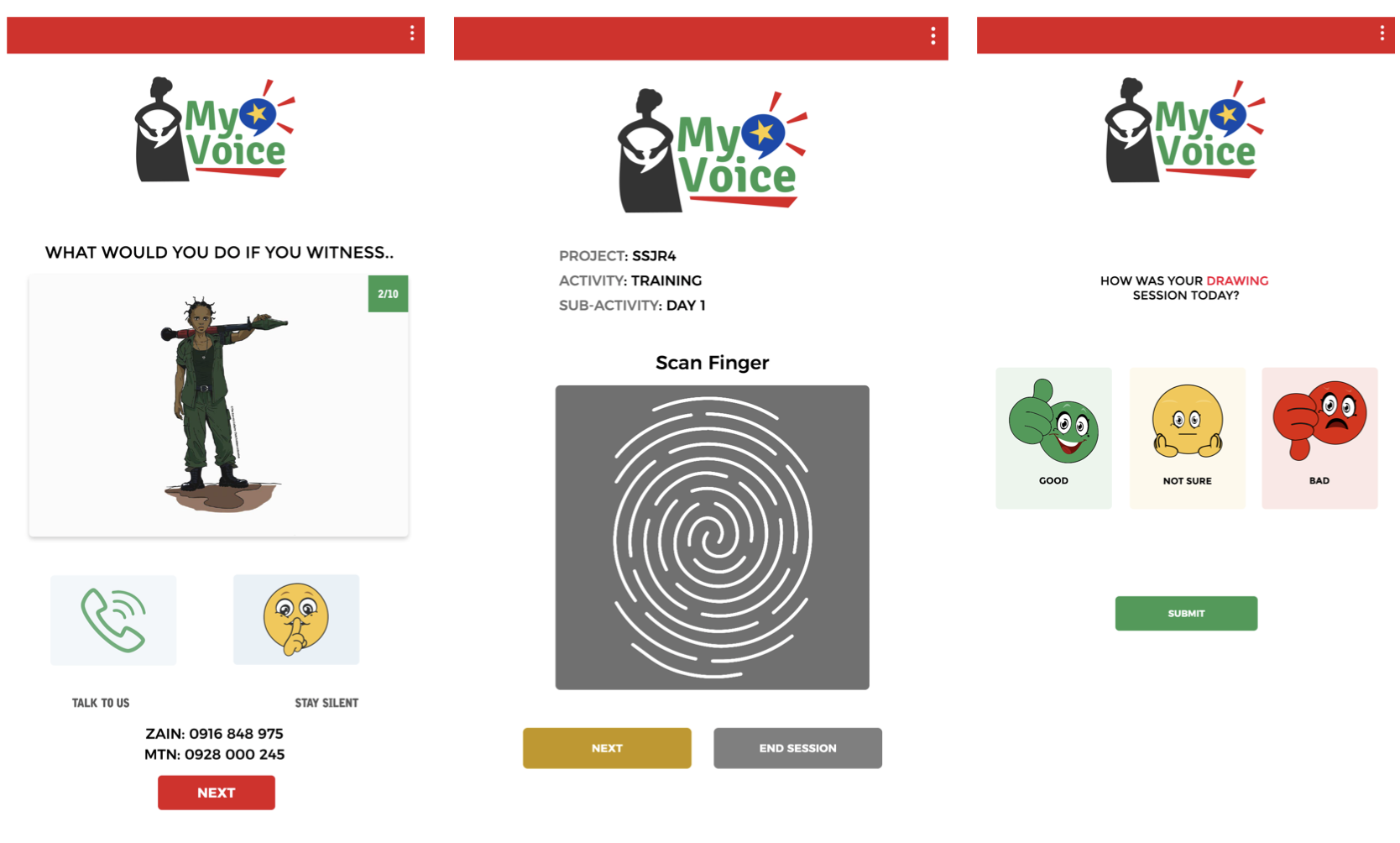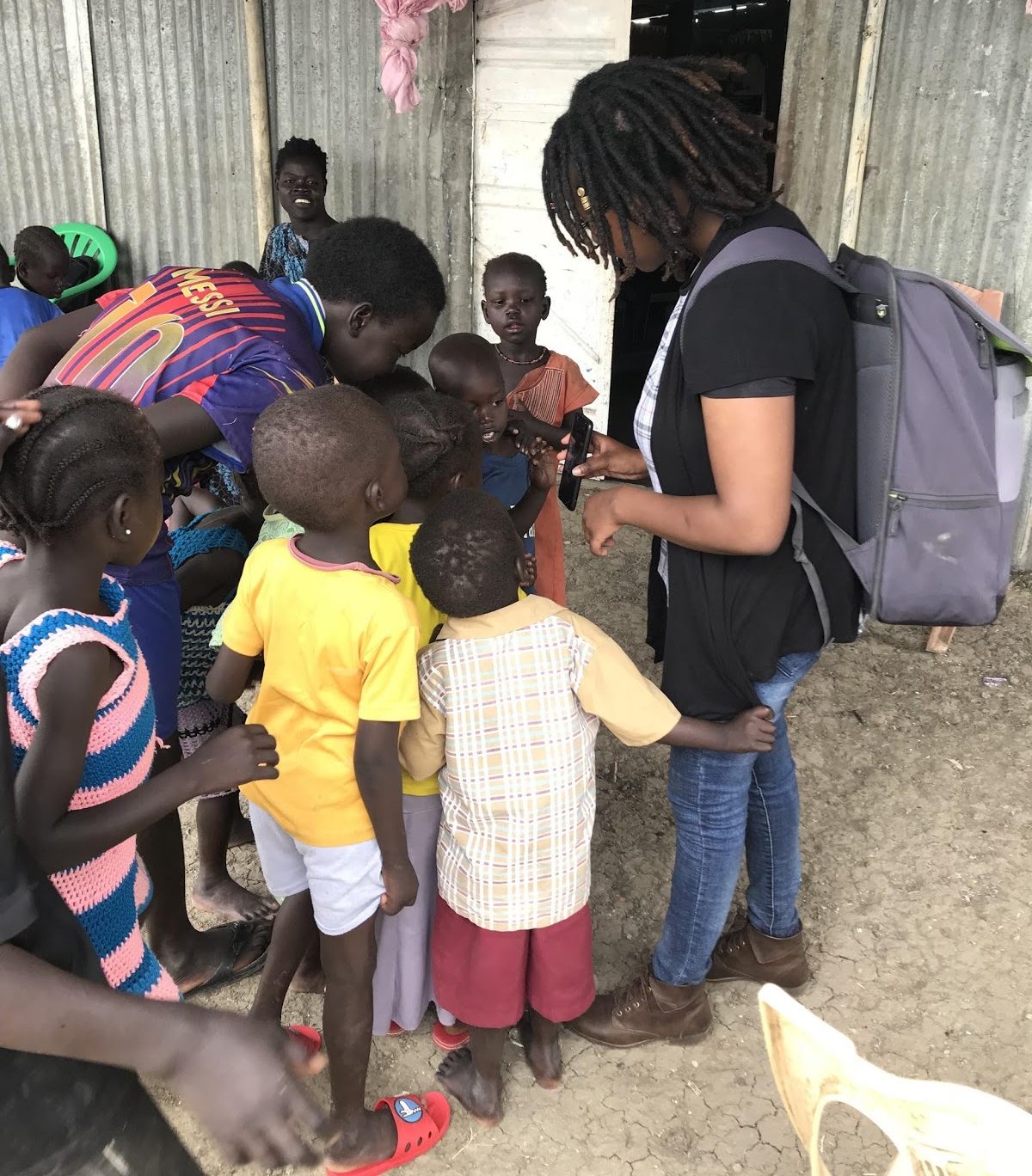The Ask

War Child Holland has a number of projects in South Sudan focusing on psychosocial support to war-affected children in what they call child-friendly spaces (CFS). One of their innovation projects is looking at improving feedback in the communities they work and in making people aware of the grave violations of international humanitarian law and how to report this. War Child was looking to accomplish this using a digital solution and approached made to be their design and development partner.
The Observation
Designing for marginalized communities with low literacy (written and spoken) levels and a different language requires a significant shift in terms of the thought process. Shorter testing and feedback sessions will help you uncover usability and usefulness challenges early on.The Process

Key activities:
- UX research in Malakal, South Sudan to uncover the needs, aspirations, and constraints faced by the target users
- App development – implementation of a learning tool and a feedback tool available on tablets with an admin dashboard for management purposes
- Usability testing – two sets of usability studies to get early feedback from the users
Technology choices:
- Learning and Feedback app – Android
- Management dashboard – Laravel, HTML5, Javascript
- Deployment – Amazon Web Services
- Database – MySQL
The Outcome

The learning and feedback tool was completed and the pilot ran between January and May 2019. The tool helped WarChild Holland accomplish the following:
- Feedback tool – get feedback from children who are part of the program
- Learning tool – teach the community volunteers who help run the programs in Malakal in an easy and intuitive manner
- Attendance register – automate how they collect data on attendance
The project is now in its second phase. Other NGOs working in South Sudan have joined War Child Holland to form a consortium supporting the continued development and adoption of the tool.
